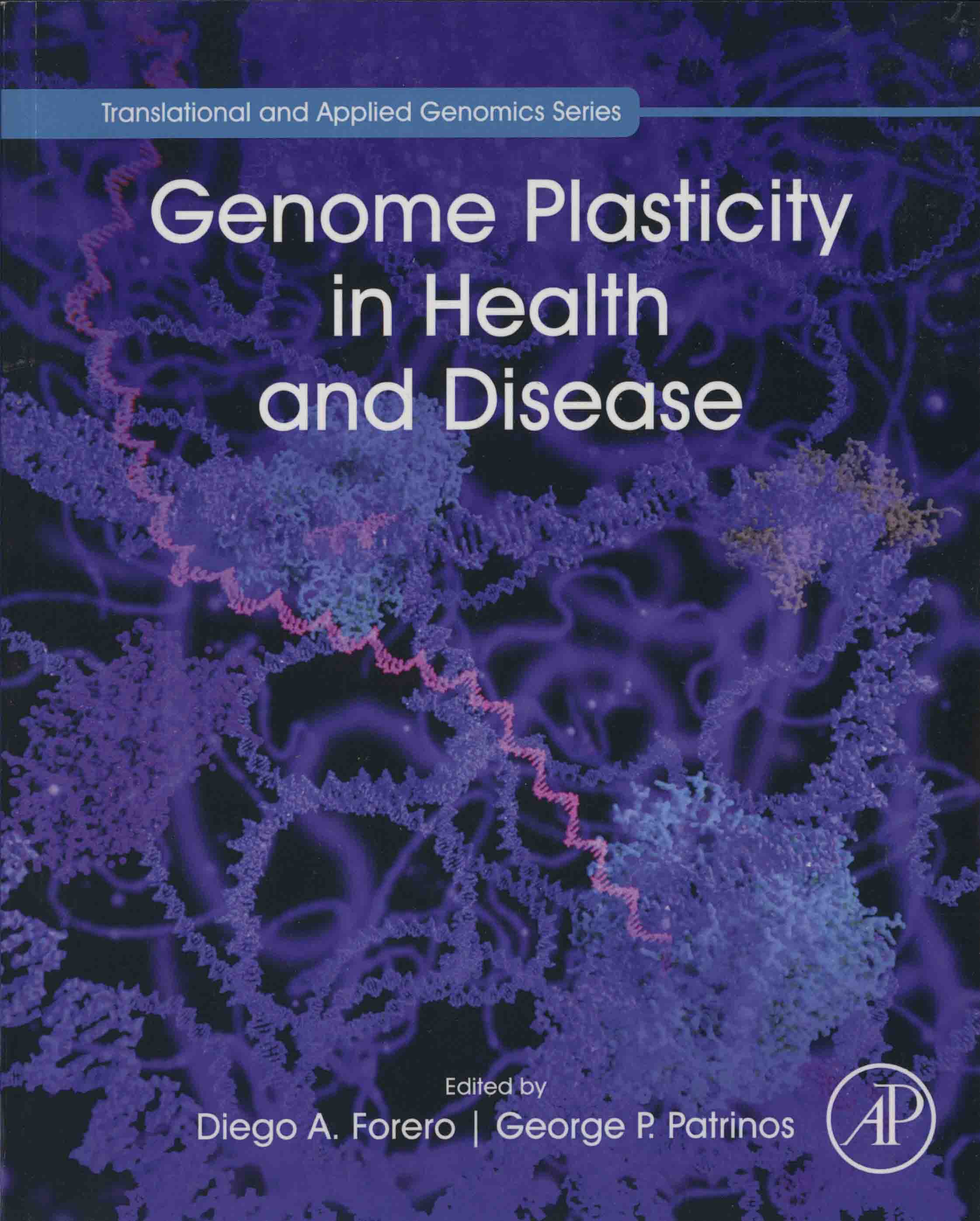 |
Genome plasticity in health and disease / edited by Diego A. Forero, George P. Patrinos. -- London : Elsevier, c2020. – (63.141 /G335g) |
Contents
Contributors
CHAPTER
1 Impact of genome plasticity on health and disease
1.
Introduction
2.
Plasticity of the human genome
3.
Plasticity of the human genome and diseases
4.
Conclusions
Acknowledgments
References
SECTION
1 Plasticity of the human genome
CHAPTER
2 Overview of the human genome
1.
Introduction
2. The
human genome
3. Human
genomics and the future of healthcare
4.
Conclusion
References
CHAPTER
3 Methods for epigenomic analyses: DNA methylation
1.
Epigenetics
2. DNA
methylation
3. DNA
treatment prior to DNA methylation analysis
4.
Methods for analysis of DNA methylation
5.
Challenges
6.
Conclusions
References
CHAPTER
4 Genomic databases
Abbreviations
1.
Introduction
2.
Reference genomes, genes, and annotations
3.
Searching genomic databases
4.
Genomic variations
5.
Perspectives
Acknowledgments
Conflict
of interest statement
References
CHAPTER
5 Genomic variability: germline, somatic, and de novo variants.
1.
Introduction
2.
Overview of germline variation and genetic architecture
3. De
novo mutations
4.
Somatic mosaicism
5.
Conclusions
References
CHAPTER
6 Founder variations in isolated populations
1. What
is a population isolate?
2.
Founder effects and linkage disequilibrium
3.
Genetic risk variant detection in isolated populations
4.
Mendelian disorders in isolated populations
5.
Complex disorders in isolated populations
6.
Conclusion
References
CHAPTER
7 DNA methylation
1.
Introduction
2.
Mechanisms of DNA methylation and demethylation
3. DNA
methylation in human diseases
4.
Quantitative detection of DNA methylation and its derivatives
5.
Concluding remarks
Acknowledgments
Conflict
of interest statement
References
CHAPTER
8 Chromatin, histones, and histone modifications in health and disease
Abbreviations
1.
Introduction
2.
Phenotypic status of plasticity
3.
Epigenetics phenomenon
4.
Epigenetic factors in plasticity and disease
5.
Epigenetics, nutrition, and disease
6.
Perspective and concluding remarks
Declarations
References
CHAPTER
9 Networks of transcription factors
1.
Introduction
2.
Transcription factor-binding site prediction
3.
Probabilistic transcription factor networks
4.
Regulation by transcription factors and beyond
5.
Concluding remarks
References
CHAPTER
10 Centromere and telomere dynamics in humans
1.
Centromeres
2.
Centromeres are regions of highly specialized chromatin
3. The
evolution of centromeric DNA
4.
Centromeric nucleosome
5.
Centromeric transcription
6.
Centromere genomics
7.
Cohesin
8.
Centromere abnormalities
9.
Telomeres
10. The
telomerase enzyme
11.
Regulation of the function of telomerase
12.
Transcriptional regulation of TERT
13.
Posttranslational regulation of TERT
14.
Epigenetic regulation
15.
Environmental factors
16.
Telomere length
17.
Determinants of telomere length
18.
Telomere-targeted therapy
19.
Future perspectives
References
SECTION
2 Human genome plasticity and diseases
CHAPTER
11 Genome plasticity and cardiovascular
diseases
1.
Genetics of cardiovascular diseases
2. Genome-wide
association studies
3.
Epigenetics and CVD phenotype variability
References
CHAPTER
12 Genome plasticity and neuropsychiatric disorders
1.
Introduction
2.
Neuropsychiatric genomics
3.
Molecular genomics of Parkinson's disease
4.
MicroRNAs and Alzheimer's disease
Acknowledgments
References
CHAPTER
13 Genome plasticity and endocrine diseases
1.
Introduction of genome research in medicine
2.
Introduction of endocrine diseases
3.
Genome plasticity and T2DM
4.
Genome plasticity and AITD
5.
Conclusion
Author
disclosure statement
Acknowledgments
References
Further
reading
CHAPTER
14 Implications of genome plasticity for drug development
1. Drug
development
2.
Epigenetic mechanisms in pharmacogenetics
3. New
molecular techniques in drug development
4. Conclusion
References
Index